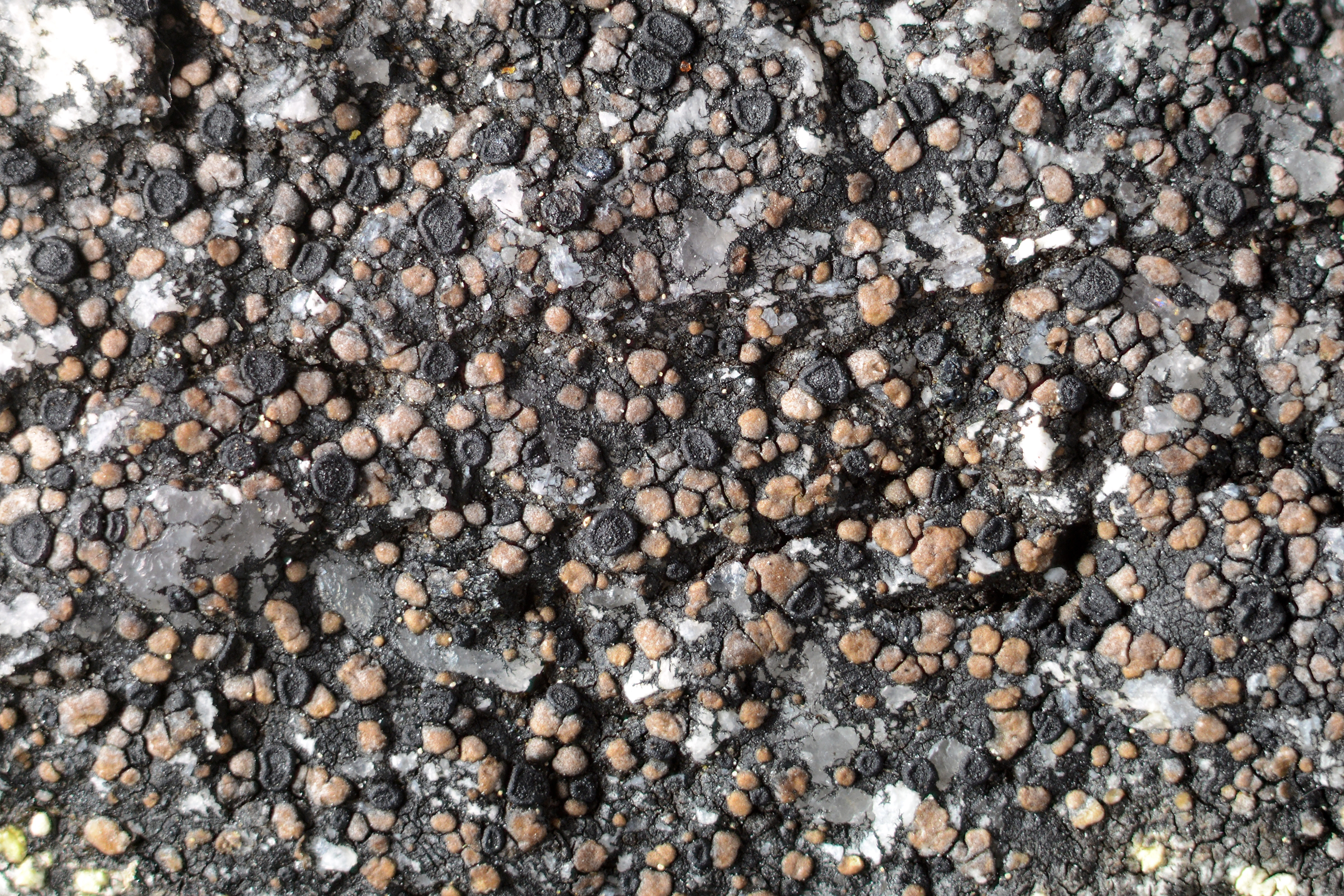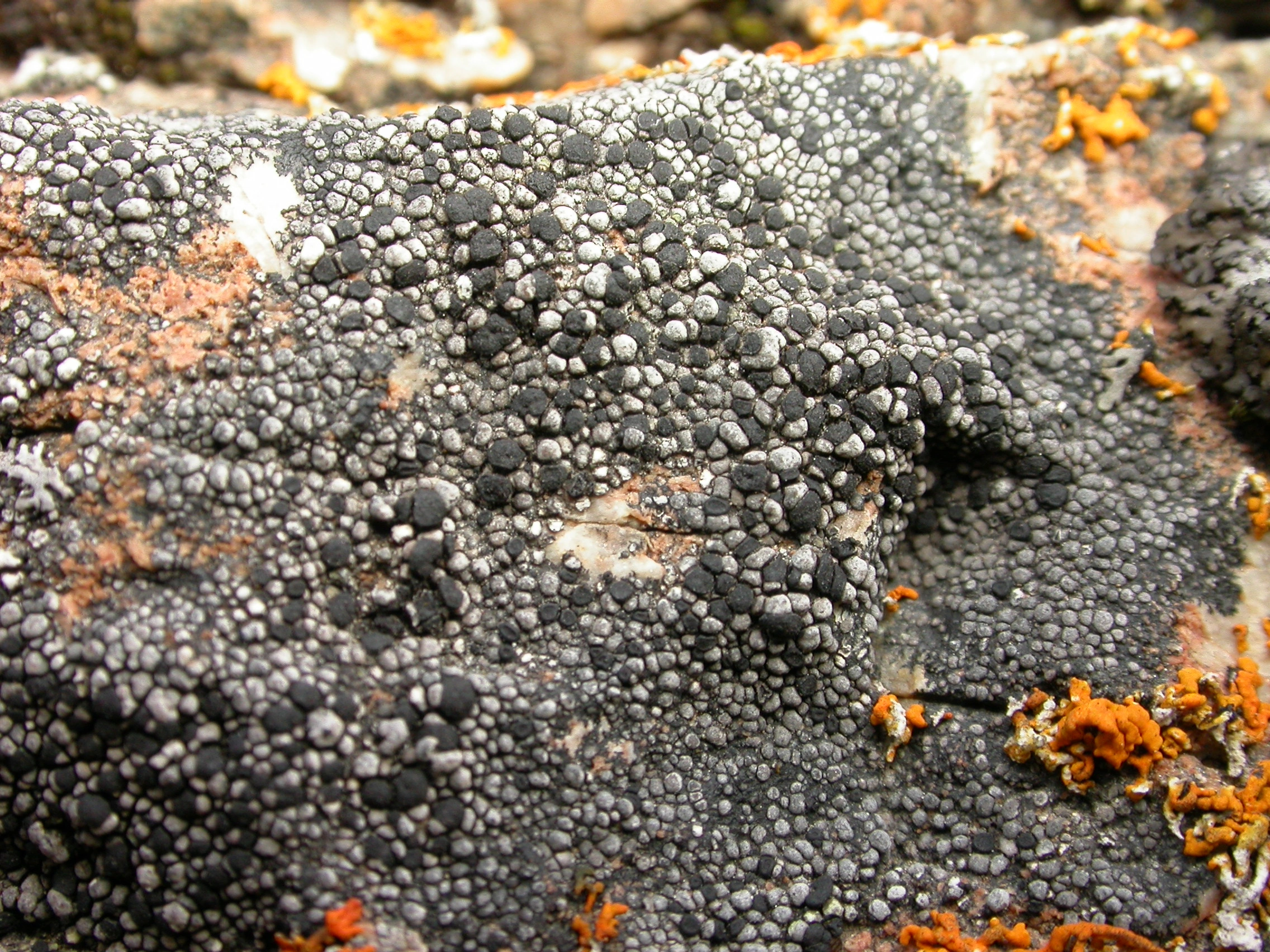Rhizocarpon subgeminatum
- Innhold
- Morphology
- Chemistry
- Habitat
- Comment
- Look-alikes
Morphology
Thallus areolate, up to 10 cm diam.; hypothallus well developed, black; areolae up to 1 mm diam., dark brown to dark grey, dull, scattered to contiguous, angular to partly orbicular, plane to somewhat convex; medulla KI–. – Apothecia up to 1 mm diam., black, epruinose, more or less orbicular, plane to weakly convex, persistently marginate; excipulum brownish black in the rim, pale brown to colourless in the inner part, containing crystals dissolving in K; hypothecium dark brown, K–; hymenium colourless or faintly green; epihymenium olivaceous green to reddish brown, not containing crystals, K– (turning brighter green) to K+ red; ascospores 1 or 2 (–4) per ascus, eumuriform, persistently colourless or becoming faintly green with age, 30–50 × 20–28 µm. – Conidiomata not seen.
Chemistry
Barbatic acid or no lichen substances; spot tests: medulla PD–, K–, C–.
Habitat
On siliceous rock, both in the lowlands and in the mountains.
Comment
The species resembles most closely R. suomiense, but that species has more convex to hemispherical, more pure grey areolae and contains norstictic acid (K+ red). It may also be confused with R. geminatum, but that species forms ascospores that soon turn dark greenish brown.


